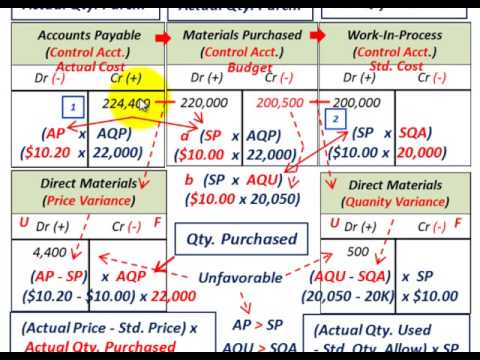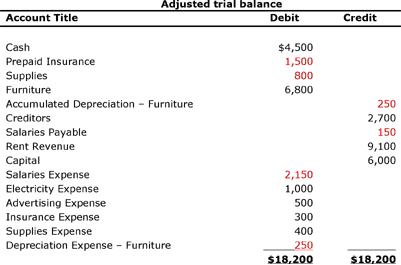
If there are receipts recorded in the internal register and missing in the bank statement, add the transactions to the bank statement. Consequently, any transactions recorded in the bank statement and missing in the cash register should be added to the register. Conversely, identify any charges appearing in the bank statement but that have not been captured in the internal cash register. Some of the https://www.personal-accounting.org/ possible charges include ATM transaction charges, check-printing fees, overdrafts, bank interest, etc. The charges have already been recorded by the bank, but the company does not know about them until the bank statement has been received. It is possible to have certain transactions that have been recorded as paid in the internal cash register but that do not appear as paid in the bank statement.
Account reconciliations should be completed monthly
Please do not copy, reproduce, modify, distribute or disburse without express consent from Sage.These articles and related content is provided as a general guidance for informational purposes only. These articles and related content is not a substitute for the guidance of a lawyer (and especially for questions related to GDPR), tax, or compliance professional. When in doubt, please consult your lawyer tax, or compliance professional for counsel. Sage makes no representations or warranties of any kind, express or implied, about the completeness or accuracy of this article and related content. In smaller businesses, the responsibility might fall on the owner or manager, particularly if they do not have a dedicated finance team.
What are Common Account Reconciliation Discrepancies?
Also sometimes called on-premise software, desktop accounting software must be locally installed on a specific computer and can only be accessed from that one device or location. Most accounting software goes beyond these tasks with additional built-in modules for invoicing and billing as well as inventory management, among other functions. The more your accounting software becomes a one-stop shop for these financial chores, the fewer integrations you need to consider. To choose the right option for you, think about the present and future versions of your business — your accounting software should be able to support both. Right now, check that it’s within your budget and is compatible with your point-of-sale and/or payroll software, as well as your accountant’s system. Based on how much you expect your small business to grow, keep an eye on scalability, too.
Order To Cash
This includes bank statements, credit card statements, loan statements, and investment account statements. Account reconciliation is an accounting process, usually embarked on at the end of an accounting period, that makes sure financial accounting records are consistent and accurate. Generally done for general ledgers, account reconciliation involves the comparison of two independent but related records to make sure that transactions and balances correspond with each other.

Once the individual client ledgers and the firm’s trust account ledger are aligned, you can then reconcile the client ledgers and trust account ledgers with your trust bank account statement. Once you have access to all the necessary records, you need to reconcile, or compare, the internal trust account’s ledger to individual client ledgers. Under an analytics review, create an estimate of what should be in the account, based on historical activity levels or some other metric. For example, estimate the amount of expected bad debts in the open accounts receivable account, and see if this approximately matches the balance in the allowance for doubtful accounts contra account. Account reconciliation is necessary to ensure an organization’s overall financial integrity. Every accounting team strives to consistently complete its reconciliation process efficiently and without errors, which, when handled poorly, can snowball into larger issues later in the close.

Account reconciliations are an essential part of financial management in any business. These reconciliations can be performed in several ways, depending on the context. Accuracy and completeness are the two most important things when reconciling accounts. Companies tend to invest in some projects or for taxation purposes or due to many other reasons.
But if you’re processing a lot of transactions, it can be an eye-opening experience to review a comparative trial balance. The bank reconciliation ensures your bank account ending balance matches the balance reflected in your general ledger. Learn which general ledger accounts should be reconciled regularly, and key things to look for during the account reconciliation process.
For example, you may need to reconcile your trust account bank statement with client balances at a specific frequency, such as monthly or quarterly. The analytics review approach can also reveal fraudulent activity or balance sheet errors. In this case, businesses estimate the amount that should be in the accounts based on previous account activity levels. Auditors review, analyze, and test client-prepared account reconciliations during the annual audit of the financial statements, trial balance, general ledger, and records. Accounts receivable details may not match the general ledger if customer invoices and credits are accrued and not entered individually into the aged accounts receivable journal.
This is vital for meeting reporting deadlines and providing stakeholders with reliable financial information. Finally, you have an online shopping expense of $80 on August 20th, which matches both records. Autonomous accounting does not mean there is no human presence; it simply means that the human does not need to be the glue that holds the accounting definition of sales invoice the process together. The challenge here is the matching process is very tedious and time-consuming, and this process typically needs to be done early in the close cycle, which causes them to hold up a lot of other tasks. These articles and related content is the property of The Sage Group plc or its contractors or its licensors (“Sage”).
- For the current year, the company estimates that annual revenue will be $100 million, based on its historical account activity.
- Although these do not occur very often, where they are spotted, you make amendments in the bank account statement, either by additions or subtractions.
- In such a situation, there can be inter-company deposits made, depending on the requirements of different companies.
Physical inventory counts must be reconciled with the general ledger, and discrepancies that can’t be resolved are recorded using journal entries. The first step is to compare transactions in the internal https://www.kelleysbookkeeping.com/cash-basis-accounting-vs-accrual-accounting/ register and the bank account to see if the payment and deposit transactions match in both records. Identify any transactions in the bank statement that are not backed up by any evidence.
In the event that something doesn’t match, you should follow a couple of different steps. First, there are some obvious reasons why there might be discrepancies in your account. If you’ve written a check to a vendor and reduced your account balance in your internal systems accordingly, your bank might show a higher balance until the check hits your account. Similarly, if you were expecting an electronic payment in one month, but it didn’t actually clear until a day before or after the end of the month, this could cause a discrepancy. The accountant of company ABC reviews the balance sheet and finds that the bookkeeper entered an extra zero at the end of its accounts payable by accident.
Go through and check off each payment and deposit on your register that matches the statement. Make a note of all transactions on your bank statement for which you don’t have any other evidence, such as a payment receipt or check stub. By catching these differences through reconciliation in accounting, you can resolve discrepancies, help prevent fraud, better ensure the accuracy of financial records, and avoid regulatory compliance issues. It not only allows you to protect your clients’ funds, but your firm too as a result. On the other hand, general ledger reconciliation focuses on the internal review of accounts. It involves reviewing the general ledger to confirm that all entries and balances are correct.
Last Updated on June 26, 2024 by Bruce
